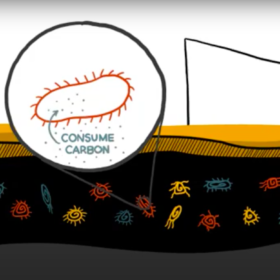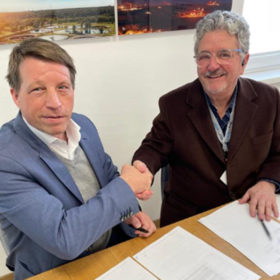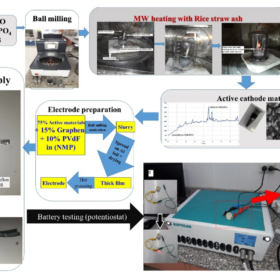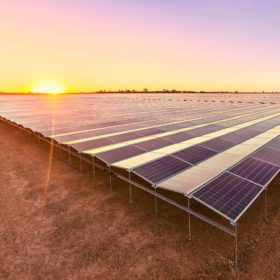REC plans Australian launch of latest module at All-Energy expo
Solar PV module manufacturer REC Group’s “most innovative panel to date” will make its Australian debut at the All-Energy Australia exhibition and conference in Melbourne later this month.
FFI & Deutsche Bahn to modify diesel engines for hydrogen locomotives, biotech startup targets hydrogen production from $1.5/kg
Cemvita claims it can produce hydrogen at the “lowest possible cost,” Deutsche Bahn and Fortescue Future Industries have announced plans to jointly modify diesel engines for locomotives, and the Canadian province of Alberta has started promoting its hydrogen potential in Japan.
Agrivoltaics for vineyards
Developers recently commissioned two different wine-related agrivoltaic projects in Europe.
European vanadium flow battery company to specialise product for Australian microgrid market
Australian outfit BESS Research is teaming up with CellCube, owned by Austria’s Enerox, to target Australian commercial and industrial projects for the potential use of vanadium redox flow batteries.
Pepsi to trial hydrogen trucks at Brisbane facility
From 2023, PepsiCo Australia will trial a hydrogen fuelled heavy duty truck at one of its Brisbane manufacturing sites. The trial is in partnership with Pure Hydrogen, a company positioning itself as a supplier of both hydrogen powered vehicles via leasing arrangements, as well as hydrogen itself.
Ultra-fast synthesis of nanocomposites for sodium ion batteries, supercapacitors
Researchers in Egypt have developed a synthesis method that uses the high microwave absorbance of silicon carbide content in rice straw ash and takes just 60 seconds to produce sodium iron phosphates-carbon nanocomposites (NaFePO4-C), which can be used as sodium ion battery cathodes and as symmetric supercapacitors.
How long do rooftop residential solar panels last?
Multiple factors affect the productive lifespan of a residential solar panel. In the first part of this series, we look at the solar panels themselves.
SA’s first solar-powered crypto mining centre to combat curtailment
The operators of an energy-intensive cryptocurrency mining centre in the South Australian industrial city of Whyalla believe it offers a solution to curtailment issues that haunt many developers of solar PV projects in the National Electricity Market.
Bright reports positive signs in sheep grazing pilot
Renewables developer Bright Energy Investments has reported positive signs after launching a sheep grazing trial to replace mechanical methods of maintaining vegetation growth at the 40 MW Greenough River Solar Farm in Western Australia’s mid-west.
Indian player reveals expansion plans, including manufacturing solar cells, electrolysers
India’s Jakson Green will expand its solar module and cell manufacturing capacity to 2 GW by the end of 2024, CEO Bikesh Ogra told pv magazine this week at the Renewable Energy India Expo 2022. He said the company also has aggressive plans for green hydrogen and ammonia, with a specific focus on distributed generation.















